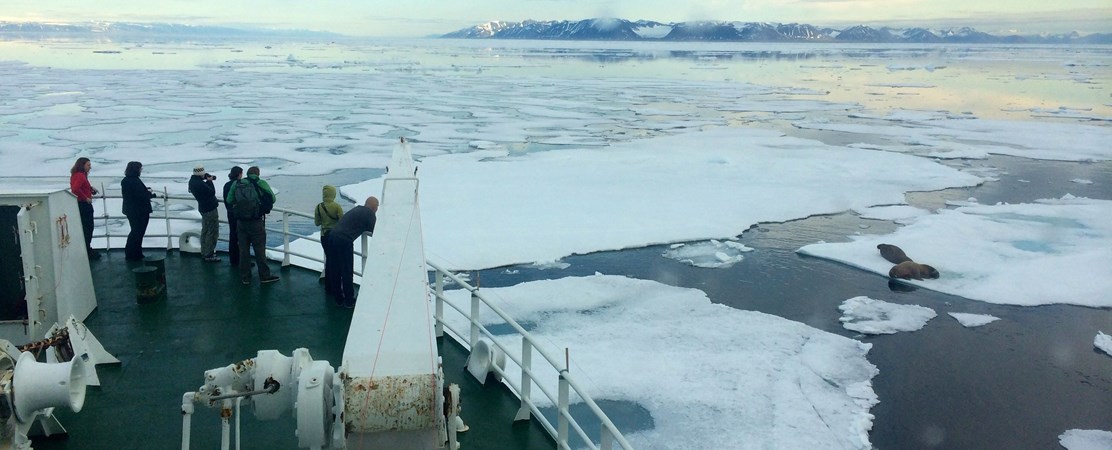Safety in the Arctic: Insurer’s Point of View

By Gard AS
For more than 100 years, Gard AS has been insuring the global maritime industries for their whole range of risks. Today, it is the largest Protection and Indemnity (P&I) Club and the second largest marine insurer in the world.
The role of an insurer is to insure the risks that its assureds encounter in their trading activities. These risks are based on an evaluation of the probability that the insurer will have to pay a claim. Gard has insured a number of Arctic voyages in recent years, which have been performed by a small group of well-prepared, experienced operators with only minor incidents. This trade remains quite limited involving mainly specialised operations such as offshore activities, fisheries, specialised cruises and research. Insurance challenges will arise when less experienced players enter the market. If Arctic trade is to grow it needs to be made as safe as possible; the emergency response infrastructure needs to be developed, and resource sharing and cooperation between states need to improve.
The Polar Code
The proportionate regulation of standards and ships in Arctic trade is long overdue. The forthcoming Polar Code is a major step forward, but work must continue to develop its scope. For example, it seems that a large share of ships trading in the Arctic during summer months could have limited or no ice class, and not be built for or experienced in trading in such a pristine and fragile environment. Yet such ships will be in compliance with the Code which sets few requirements for this type of ship.
Navigational/operational challenges
Rough and rapidly changing ice and weather conditions, imprecise positioning and inexact sea charts, the Arctic area’s remoteness, lack of safe shelter, lack of response infrastructure and means of communication are major challenges. In addition, most crews will not be familiar with the route or conditions. Data is limited though Gard’s experience seems to indicate that most hull damage in the Arctic is due to groundings and hitting ice floes with poor visibility being an important co-factor. That said, more ice-free open waters will probably not reduce the overall risks as more inexperienced operators are likely to use higher speeds in the area.
Lack of response infrastructure and implications of a casualty
The problems which a ship experiences in an emergency in the Arctic are likely to be significant and challenging. It can take considerable time to get appropriate response personnel and equipment in place in the event of a casualty. Apart from having only a few workable months to conduct any cleaning or remedial work, airstrips are remote, fog and snowstorms can ground workers for weeks at a time, and it may be impossible to bring in sufficient vessels, equipment and other resources to assist in a clean-up operation. Any wreck removal can be expected to be very expensive and dangerous, if not impossible. As a result, response costs may be prohibitively high due to the time, specialist needs and distances involved, and in practice mobilisation time takes too long to allow for any immediate response.
The complex logistics can mean that a minor incident can easily develop into a major casualty, and because of the ecological sensitivity of Arctic waters this can also lead to significant environmental damage. A simple engine failure can end up as a wreck removal due to mobilisation constraints.
Insurance requirements
Protection and indemnity (P&I) liability insurance is compulsory for Arctic trade. Generally P&I policies do not include trading limits in their policies. However, P&I Club rules will generally require its members to notify the Club if a ship is to perform an Arctic voyage on the basis that this can represent an alteration of risk. The Club needs to assess whether and on which conditions it may agree to cover the risks involved, and its member will have to provide a full risk assessment for planning a safe voyage
Hull and Machinery (H&M) insurance generally excludes Arctic waters as a trading area unless prior permission is obtained from the insurer. Assureds are expected to have a well-prepared and equipped ship and competent crew to perform a safe voyage. A major issue is the availability and cost of assistance. On the Northern Sea Route transits, Atomflot has agreed to provide free assistance to any vessel under their escort as part of the escort dues. This has enabled the risk and insurance premiums to be kept at lower levels. Similar agreements could be established for other Arctic destinations.
Going forward
Predictable response times and costs for casualties are important for insurance purposes. Insurers would like to see further cooperation, coordination and mutual assistance between the Arctic states. The levels of response personnel and equipment in place will never compare to those along traditional shipping routes. Collaboration is therefore even more important to ensure that the resources available in the Arctic are used as efficiently as possible and permissions to act are expedited. In addition, and perhaps key to safety in the Arctic, is the level of preparation carried out by shipowners. The depth of risk assessment, level of knowledge, equipment on board and competence of the crew for Arctic conditions are critical to reduce risk.
